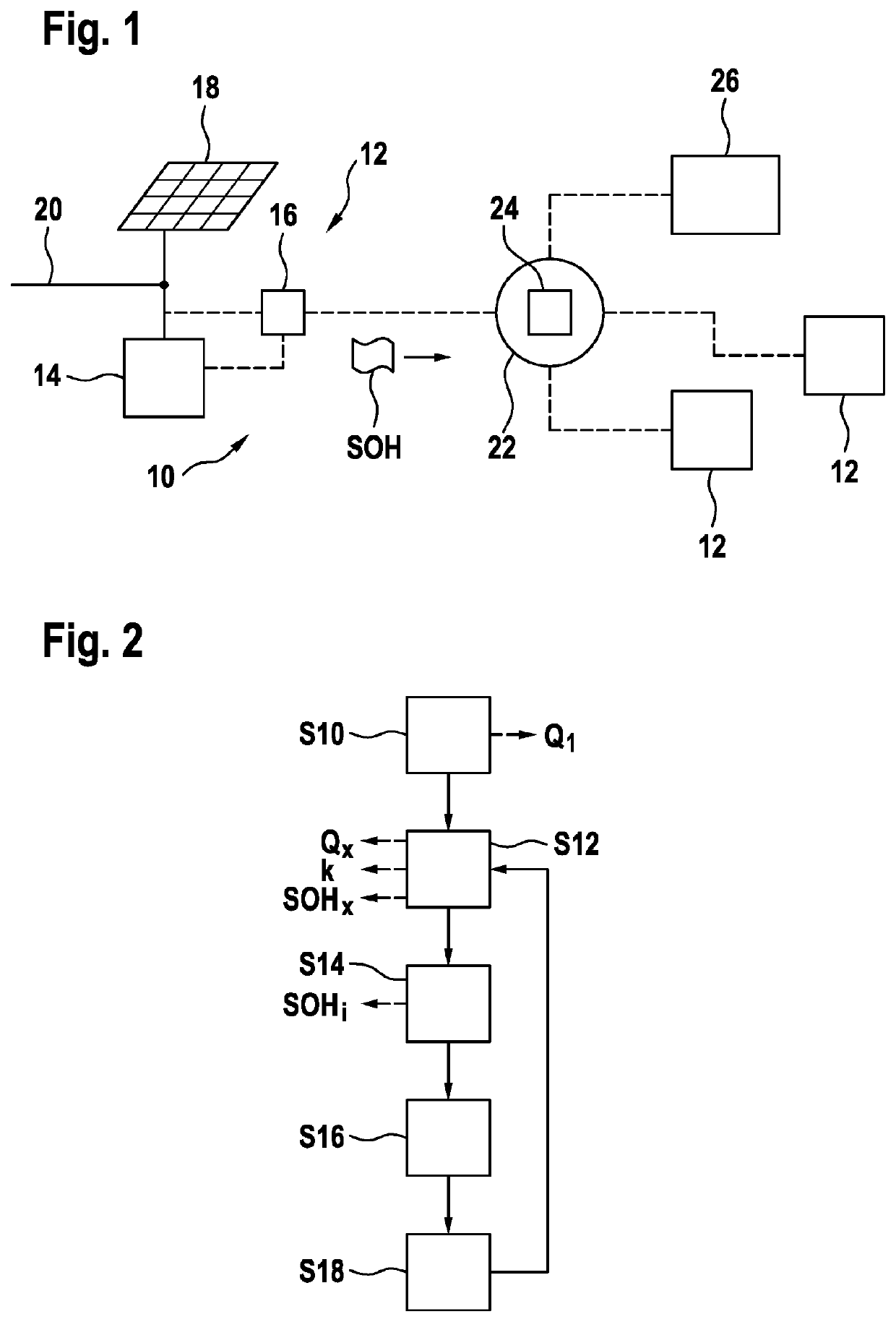State of health estimation for batteries
a battery and health estimation technology, applied in the field of battery charging, can solve the problems of affecting the control of the power grid, each of these variables may add to an error,
- Summary
- Abstract
- Description
- Claims
- Application Information
AI Technical Summary
Benefits of technology
Problems solved by technology
Method used
Image
Examples
Embodiment Construction
[0012]It is an objective of the invention to provide a simple and accurate way of determining a state of health of a rechargeable battery during normal operation of the battery.
[0013]This objective is achieved by the subject-matter of the independent claims. Further exemplary embodiments are evident from the dependent claims and the following description.
[0014]An aspect of the invention relates to a method for determining a state of health of a rechargeable battery. The rechargeable battery may be a battery for storing energy of a photovoltaic system, a battery of an uninterruptable power supply or a battery of an electric vehicle. In general, the state of health may be a number, such as a percentage value, which indicates that a battery is completely healthy (i.e. functional), in which case the state of health may be 100%, that the battery is completely unusable, in which case the state of health may be 0% and states in between.
[0015]The method may be performed by a controller of a...
PUM
 Login to View More
Login to View More Abstract
Description
Claims
Application Information
 Login to View More
Login to View More - R&D
- Intellectual Property
- Life Sciences
- Materials
- Tech Scout
- Unparalleled Data Quality
- Higher Quality Content
- 60% Fewer Hallucinations
Browse by: Latest US Patents, China's latest patents, Technical Efficacy Thesaurus, Application Domain, Technology Topic, Popular Technical Reports.
© 2025 PatSnap. All rights reserved.Legal|Privacy policy|Modern Slavery Act Transparency Statement|Sitemap|About US| Contact US: help@patsnap.com

